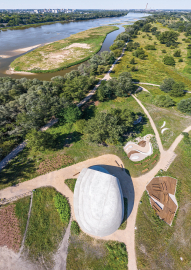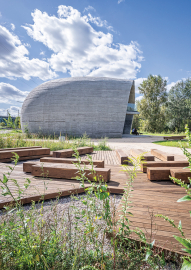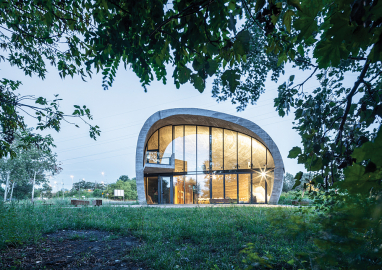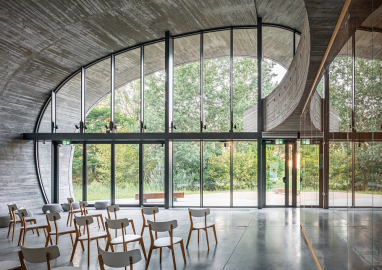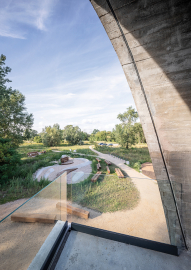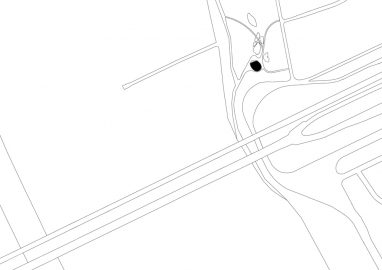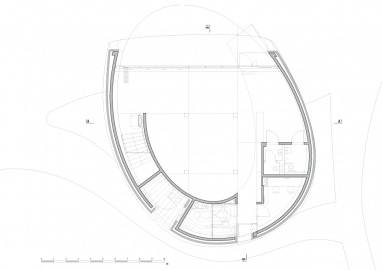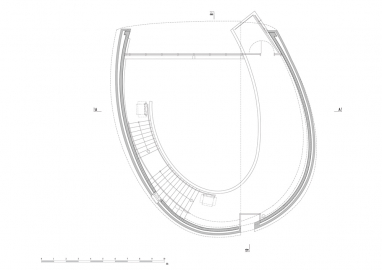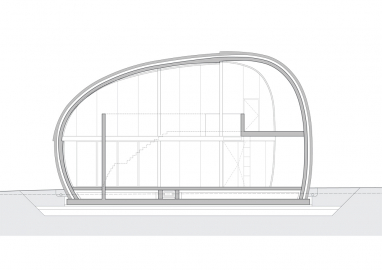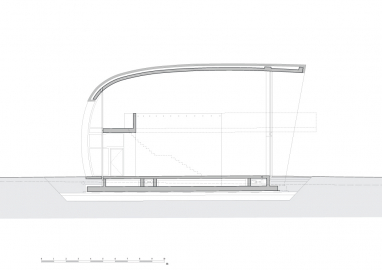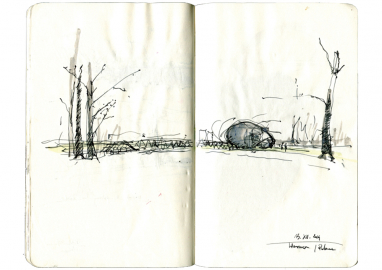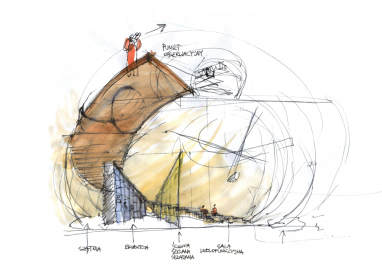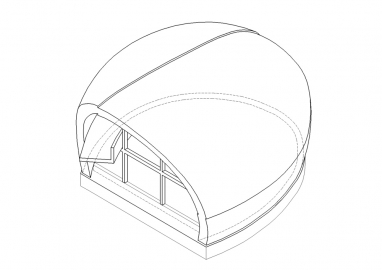Educational Pavilion with a Clearing on the Banks of the Vistula River in Warsaw.
The river is change and the passage of time.
Time has left a stone on the river bank.
The stone remembers the past and stops time for a moment.
The idea of the project was born while visiting the place. The direct inspiration was a postglacial stone lying on the shore in the thickets. Its form, location and symbolism gave rise to reflections, searches and references to the symbolic sphere. Erathics boulders are scattered and, in this part of Europe, they draw a map of the extent of glaciation. Their highest density occurs in the Warsaw region. They are the witnesses of natural processes, natural exhibits sharing tales about the distant places they have come from.
The form of the designed landscape follows the idea of errare. It interprets the shape of river tides and its shoals. They bring to mind the processes of displacement and migration, instilled by the form of a stone, referring, however, to a different time and spatial horizon. The paths refers to the current of the river, and the elements of land development refer to the materials collected and following its course.
The pavilion form constitutes the Erathic interpretation, giving it the rank of a sculpture that hides the caring space in its interior. The hollow interior of the stone refers to the archetype of a shelter, solid, safe, and at the same time open to a beautiful view of a clearing, and a river of flowers following the bank of the Vistula.
There is a real stone in a clearing by the Vistula River. The stone that is part of this place became the inspiration for the pavilion. Its external form refers to the distant past. The stone remembers glaciers, remembers changes in the river bed, remembers prehistoric reptiles, generations of animals and plants. The hollow interior of the stone can become a repository of knowledge about the past and life of the Vistula valley. The man pauses for a moment at the stone.
Postglacial stone, erratic. Varsovians loves these stones. There are stones at houses and streets, in parks and gardens. There are stones in the foundations and plinths of old buildings, building new ones reveals old stones. The Vistula Valley is full of stones. The form of a pavilion-stone connects man with nature and prehistory. The river creates its shore in accordance with the laws of nature, has its own geometry, sandbanks and shoals formed by the transferred rock material. The geometry of the river inspired the development of the clearing.
The Stone is a place of learning about the rules of life, learning to live with nature by workshops, concerts and lectures. It is also a meeting place for the local community.
In the competition project, we set ourselves the task of building a useful metaphor. Its geometry eluded the design routine, so we built virtual and real models and drew dozens of sections. This notation has proved to be effective, and the challenge of converting information into matter is worth taking up by builders. Concrete stone is an experiment, from the development of a formwork system, the selection of concrete and the construction of double shells of an amorphous shell, through insulation, a load-bearing façade, to a handrail. The experiment confirmed the reality of the form. Time will show whether the metaphor has the power necessary for its duration.
Practical aspects of the selection of technologies and materials are also important here. Concrete, which is almost the only building material in the facility, is durable and does not require any special treatments. Once built, the facility can function for a very long time without additional expenditure. Concrete also has high thermal inertia, which reduces the cost of heating and cooling.

